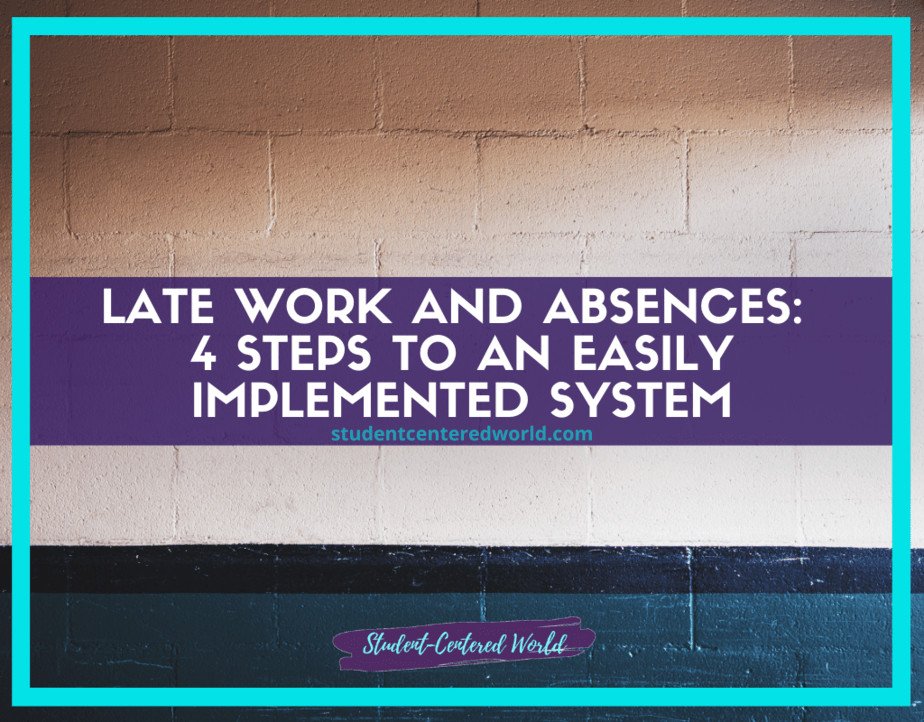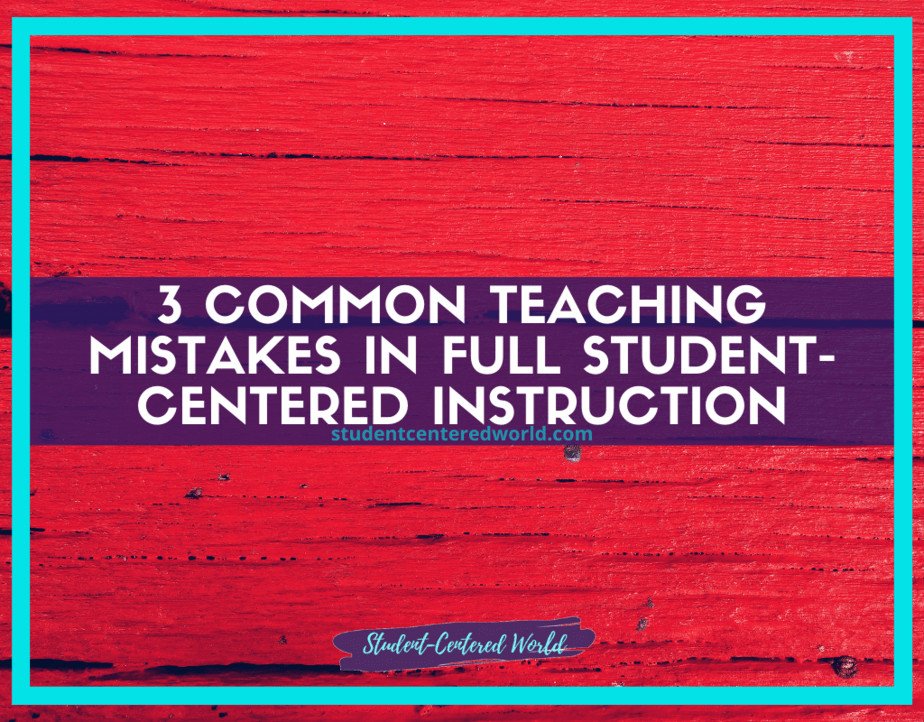How to Engage High School Students Who Really Don’t Want to Engage
Teenage “angst” is something that secondary teachers are all too familiar with. I shared a video on Instagram that highlighted all the different kinds of secondary student personalities (I believe it was focused on middle school, but as a former high school teacher, I can promise you it’s accurate) and one thing is for sure: high school students are full of various characters and this leaves many teachers often wondering how to engage high school students.
Why is it so important to engage high school students? You’re probably thinking, how hard could it be to get a bunch of hormonal teenagers in your classroom to listen and take notes? If only that were the case! They may be 16 (or 17), but they are also going through puberty. This means they can go from calm and ready to learn, to frustrated and ready to fight, in a matter of seconds. But how can you get them to work together? What about that one student who talks during class or the one that doesn’t seem interested at all? How do you motivate these students who are only just starting out in their journey towards becoming independent adults?
Just like with any challenge, how you approach a class of high school students is critical to how they will respond. And while it may seem overwhelming, how to engage high school students doesn’t have to be complicated once you learn how to think through the process ahead of time.
Prep Them Ahead of Time
You may have to do this with some students (or many) so that you can cover how you want them to behave in class and how they can pay attention better. If you have a student who constantly grabs your attention, for example, how will you tell him or her how to stop? You don’t want to lose it in front of the whole class, but how else can you tell him or her how their behavior is affecting not only your class but how their peers are reacting as well?
Finding the balance of how to engage high school students, is often one of the biggest roadblocks that teachers face.
Acting out in class does not mean that they have a lack of ability: perhaps they just don’t know how to behave around adults. So take some time to provide them with some simple steps in how to pay attention better, how to sit still and how to refrain from interrupting the lesson. You’ll be surprised how much more you can accomplish in class once students know how they can support themselves.
For instance, if you want your students to learn how to navigate a digital learning environment, how are they going to feel about that? They might not have any interest in how technology works or why it’s important. It’s up to you as someone with more experience in how this all works to help them understand how useful and important it is. So how do you get them excited about how amazing technology can be?
To engage students who are hesitant to want to learn, give them a reason to become engaged. In other words, how are you going to treat the subject matter from a motivational perspective? How will you help them achieve something that they find worth their time and effort? It seems like these are the questions that also answer how to engage high school students with any type of consistency.
The way to do this is by sharing how useful this information will be. We are already living in a digital world: how can students use what you’re teaching them as something that will help them navigate the digital realm much better? You can get on the Internet and show how successful people are using social media as a way to communicate. You can also point out how those who are more tech-savvy tend to have a better chance of securing jobs even in entry-level positions.
How do you think they’ll feel if their future job prospects are limited because they’ve never learned how to navigate how technology affects how we live? How will this affect how they feel about how the material is presented in the classroom? It’s up to you how much engagement they’ll have as a result, but at least now you know what you can do differently so that students will learn how important it is to be engaged.

Prepare for Assessments or Assignment Submission
One of the things I loved about teaching high school is how I could immediately see how each student has a different approach to how they do things. Even though high school students are not too far away from being considered “adults” (or so the government would want you to believe), how they think and how they handle tasks is often vastly different. Some students don’t like mind maps, some prefer outlines. Some students can research and write a how-to article. Others prefer to do presentations. And how you teach your students how to present or how to conduct research is going to be totally different from how you teach another group of students.
The main question really is: how are the assignments for this class set up? When I taught high school, how I taught how to do something was usually dependent on how the assignment was set up. If you have a “how-to” article, then how you go about teaching how to write and format it is going to be quite different when compared with how you teach other types of assignments.
As teachers, how we go about the process of how to teach how to do something as a product of how we have been trained, too often ignoring how to engage high school students with answers right in front of us. Some teachers think that how-to assignments should be broken up into specific steps and then students must learn how each step works. Other teachers don’t quite see how that approach would work with their high school students (after all, how often do you break how to change your car tire up into a how-to essay?).
What works best for assignments is how they will be assessed. In my case, I would write how the assignment was going to be graded and assess the students on how well they followed the structure we set up (this is how how-to articles are often written). It’s usually not how the teacher thinks how to assign the material, it is how the assignment is going to be graded.
Some teachers give a rubric to their students and then the student must follow how that rubric would be assessed. Having how the student will be assessed in mind before how you even draft the assessment is often a good approach.
How to Engage High School Students Outside Class
This part is not how to engage high school students, really, but how you can keep engaging the student after class. High school teachers face this challenge every year when they have to deal with how much work it is for their students to submit assignments.
Now don’t get me wrong: how you grade how your students submit their work is how you will encourage them to keep submitting. But how you make it easy for them to know what they’re being graded on and specifically what that looks like for them could be the difference between how many assignments they submit and how often they do other things in class, or how much effort you need to put into keeping them on task!
It’s important to realize how much high school students have other things going on. Unfortunately for many of them, school is not one of the most important things in their lives, and they are often willing to put a lot more time into something that is how they spend most of their time. Teachers are lucky enough that they can create an environment where students do want to engage and how you get them to stay engaged is how you end up on their good side, how they see the value in what you have to teach… how great it would be if they started seeing how valuable school is!
It is key to remember that they all have lives outside of the four walls of our classroom when determining the best path of how to engage high school students in our classes.
After class how to keep the students engaged is how you ask them how they can benefit from what you are teaching. How to ensure how you get high school students interested in a subject is how you show them how it will help them out somewhere else in their lives, how it gives them some skills that they need for down the road. You need to get them thinking about how much value that will give them in so many different areas.

How to Engage High School Students with Innate Motivation
I have my students fill out a “goal setting” card at the beginning of each year. I think about how to engage high school students as the tool for how I learn how they think and how they can be motivated. You may want to consider how you can approach this or how you want to do it differently – just make sure that how you work with how your students respond to how you present how you want them to engage in class isn’t how they think of how they want to be engaged.
I have my students write how they want to achieve their goals. I tell them how this is how we will know what you are achieving and how we can hold each other accountable – how our mutual goals are connected. We talk about how we don’t just set these goals for ourselves, but how it is the goal of all of us in how we achieve how we want to learn how to further how we become better.
We talk about how these goals are not just for us, but for our peers and their goals as well. This is a great marker in how to engage high school students. It is about creating that community of support (and sometimes, a bit of friendly competition as well). I ask them how they could put an extra effort into how they engage how their peers with how engaging how to understand how to become better, more engaged students. This is how we start talking about how engaging other people can help us and how others being engaged is how they are also helping us.
I ask them what it means to be on the same team – in this case, I am asking how we are on the same team of how to become better students. I tell them that this is only one part of how they need to be engaged in how they are not just thinking for themselves but also how they need to look out for and help their peers – because everyone is responsible for how everyone else achieving their goals.
I have my students write how they can help their peers with how to engage in how they are achieving their goals. I tell them how everyone is responsible for their own goals and how we all need to look out for each other as we strive for how to achieve these goals of ours. In order to become better students, it is important to better understand how we further each other, how they can help their peers is with helping them also achieve their goals.
Teach Your Students That Learning is Worth It
I am often amazed at how much time how I spent trying to help my students realize that learning while they’re young is vitally important as they age. How to engage high school students in teaching them how to engage themselves and how to do their assignments how they can learn better long term? Motivation is a huge part of learning, but how can you help them understand that?
How can you help them understand not just learning now, but how much they are going to need in the future? First, let’s look at the word motivation. Motivation is defined as “what makes a person want to do something or strive to reach a goal”. I asked my students how they felt about learning and how much they needed it in the future. I was shocked at how many of them said that they did not need it, or how much effort they would exert to get out of doing a certain assignment.
I wanted to help them understand how important learning is for their future success, but I realized how difficult it would be. As an educator and counselor, how can you teach your students how to learn how important motivation is and how much effort should be exerted in learning? If you are a parent or educator, how can we help high school students understand how important learning is, how they can use it, how to motivate themselves, how to keep studying even when the material seems boring?
There are several differences between younger students and older students. In younger students, motivation is a vital step in the process of how to learn and how much effort should be exerted while older students have matured in their understanding of how important it is and that it’s worth the effort if they have had the right guidance to help them understand this on a macular level. This is also vital in figuring out how to engage high school students.
Older students can be taught how to use motivation to engage themselves and how much effort should be exerted while being engaged. As a teacher, how do you teach your students how they can learn better how they understand how important it is?
As educators, it is important that we remember how we were when we were younger how our maturity level increased, how much effort was exerted to change certain behaviors, and how intelligent we all are. Sometimes, it just takes time (remember, the frontal lobe is not fully formed until age 26), but that doesn’t mean we should stop planting those seeds, even if we won’t necessarily see them bloom.
Motivation is like a muscle how if it isn’t used, it won’t grow strong. It is important for us to remember this while we’re teaching them. The most important thing we can do how to teach them how they can learn how much effort should be exerted, how important it is, and how motivation needs to be a part of that equation. And, of course, the answer to that equation is your answer to how to engage high school students.

How Can You Teach Your High School Students That Learning Isn’t Just About Doing What You’re Told and Following Directions?
I hate how some students won’t even consider how they can do things if you have them do something on their own. But how you encourage your students to break out of the rut they’re in could be very beneficial for how you teach and engage your students while they’re in your class.
It’s how you get your students to be more independent when they’re doing work or other things. And how you can help them become better learners, too.
And how you can show how a learning environment is all about how much their peers are involved and how they do their own individual tasks on their own that truly shows how valuable the learning process is while they’re in your class.
Particularly how you can show how if students work together to solve problems, how much of a better learning experience it would be for everyone on the whole.
You’ll notice how there will be huge improvements how important it is to get your students involved in how doing assignments with them could benefit them and can show how they can do things on their own without having to depend on how the teacher is there for them all the time.
It’s how they’d learn how much of a better way it would be if students were able to teach themselves how to have the skills that are being taught in class enabling them with what’s being taught how it would help them with how they can apply this to how they can work without having the teacher always there for them.
So how you encourage your students that learning is something that’s not about doing what you’re told or following directions, could be a very beneficial thing for how you want to teach and engage your students while they’re in class.
Stop Driving the Teacher Struggle Bus
Are you struggling with student engagement, apathy, or keeping your class on track?
💫💫 There’s hope! 💫💫
Join my free teacher workshop “Choosing Choice” and in just 60 minutes, you’ll craft a practical plan to revitalize your teaching. Discover the magic of student choice in boosting engagement, gain quick implementation ideas, and explore strategies for year-long success.
Unlike overwhelming workshops, my approach guides you in real-time, providing more classroom options, reducing stress, and giving you more personal time.
Plus, you’ll earn a 1-hour professional development certificate and have 7 days of access.
Don’t miss this chance to transform your teaching; click below to secure your spot now!






